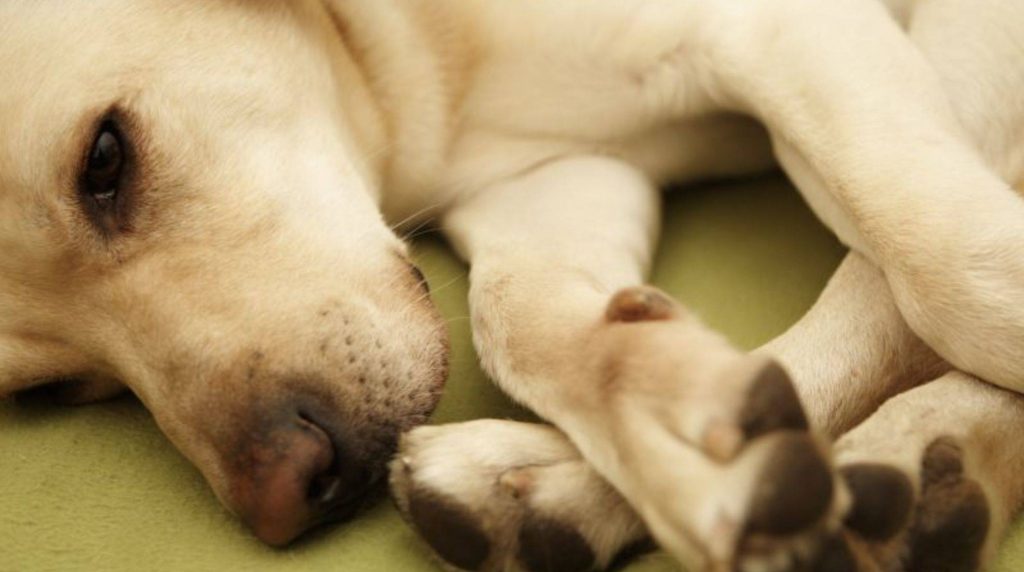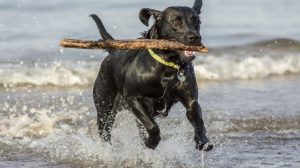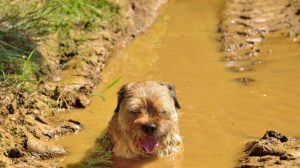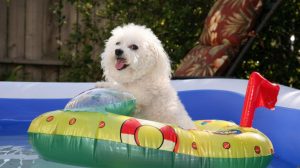A cruciate ligament tear in a dog can manifest itself through various symptoms. However, as a dog owner, you usually quickly notice that something is wrong with your pet’s musculoskeletal system. In this case, you should consult a veterinarian as soon as possible so that he can make the correct diagnosis and start treatment.

The symptoms of a cruciate ligament rupture in dogs can occur either without a reason that the owner can understand or after an accident, fall or similar. Dogs with cruciate ligament injuries tend to be lame to varying degrees.
What is a cruciate ligament tear in dogs?
The cruciate ligaments are located at the knee joints of both the dog’s front and rear legs. Two straight lateral ligaments connect the femur with the lower leg bone and prevent the knee from twisting when running or the lower leg bone from slipping forward. They ensure stability and mobility at the same time. There are essentially two types of cruciate ligament rupture in dogs: “degenerative rupture” and “traumatic rupture”.
The degenerative form develops gradually due to constant stress on the anterior cruciate ligaments. At first, only small tears do not cause any symptoms, but one day the cruciate ligament tears off completely. In some dogs, the strain on the cruciate ligaments is more significant than in others due to anatomical peculiarities. Giant breeds, such as the Bernese Mountain Dog, St. Bernard, Labrador and Golden Retriever, Rottweiler and Boxer, are prone to cruciate ligament rupture due to permanent incorrect and overloading. But being overweight can also be a risk factor. The traumatic form arises suddenly from an accident, a fall or jump, sometimes from an unfortunate movement during a dog fight.
Cruciate ligament rupture in dogs: possible symptoms
Of course, the fact that a dog is lame does not always have to be due to a cruciate ligament rupture, but lameness or limping is one of the most common symptoms of the injury. It usually worsens when the dog has been lying down for a while and then gets up. Your dog is likely to adopt a relieving posture and constantly unload one leg, especially after a long run. With this injury, many four-legged friends move more petite than usual and appear to no longer enjoy it.
A cruciate ligament rupture in a dog can sometimes show stronger, sometimes weaker symptoms: the dog may limp after getting up but then walks again almost entirely after you have taken it for a walk for a while. Since the dogs don’t move as much as usual, even well-muscled dogs may lose more and more muscle mass over time if the injury is not treated.
The vet will make the exact diagnosis.
Since the symptoms could also have causes other than a cruciate ligament rupture, you should take your pet to a veterinarian who will make an accurate diagnosis. If left untreated, a cruciate ligament rupture in dogs is painful and can also result in secondary diseases such as arthrosis.
The vet will then run a series of tests on your dog to indicate a cruciate ligament tear. A cruciate ligament rupture is very likely if your pet spreads a leg sideways during the sit test. The doctor can also feel whether the upper and lower portion can be moved – this is only possible if the cruciate ligament is torn. If the vet is unsure, they can x-ray your dog’s knee joint to be sure.
Treating a cruciate ligament tear in a dog: surgery is usually necessary.
Luckily, a cruciate ligament tear can only be treated without surgery in small, light dogs. The vet will then inject painkillers into your four-legged friend’s affected knee. Otherwise, an operation is unfortunately unavoidable. There are various techniques to restore the stability and resilience of the knee joint with implants or other aids.
This is how you take care of your dog in everyday life after cruciate ligament surgery.
For the first six weeks after cruciate ligament surgery, your dog must not put any weight on its affected leg. You must slowly and gradually increase the intensity of movement until it can walk normally again. Dog physiotherapy is beneficial. It also makes sense to watch your weight so that your joints are not put under unnecessary strain.









